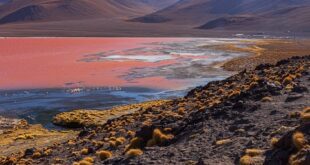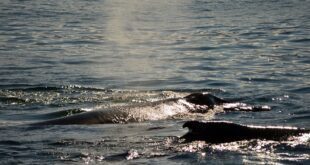Exploring the Marvelous World of Marine Biology
Have you ever been astounded by the sheer variety of creatures swimming in the ocean or amazed by their fascinating behaviors? Let us introduce you to the exciting field of marine biology that studies everything related to marine life, from microorganisms to whales. Dive into this magnificent world full of mysteries, discoveries, and extraordinary creatures.
The Fundamental of Marine Biology
As a branch of biology, marine biology focuses on the life and environment of marine creatures. This discipline involves researching ways marine animals function, survive, and reproduce in marine ecosystems. Marine biologists find varied opportunities; they conduct different kinds of research on how marine organisms interact with one another, study their genetics, develop medicines or examine environmental changes affecting the planet’s oceans.
What To Look For – Skills to Become Successful
Becoming a successful marine biologist is often determined by trial and error or even success at college. However, achieving certain skills is critical to have a successful journey through studying the aesthetics in the marine world. Besides holding a degree in biology, marine biology, or related fields, much of what it will depend on means having extraordinary patience, being proficient in the paperwork phase, time and money management and requires good organizational skills for communication and clients as appropriate.
The Fascinating Marine Creatures Diversity
Marine animals can be planked in physical structures, form, lifestyle, and more. There are tiny phytoplanktons that are the first tier in the food web producing almost 50% of oxygen shared across oceans, alongside colossal natural wonders such as blue whales, giant cuttlefish or the predacious king of them all – great white shark, have immense admiration from across the globe. To add diversity, exotic, eye-catchy, and stunning species such as colorful reef fish, jellyfish, vampire squids or crabs, unique species that roam the depths beyond human reach for survival, have world-renowned accomplishment.
Tan Topography and Marine Climate Reflected in Underwater Beauty
As a biologist, diving around either the reef or open water areas aid in accessing biodiversity commonly failed by inner-cover sections. Whether undersea’s depth, temperature or through pure beauty, obvious differences are discovered between underwater habitats, picture-greeting friendly dolphins, ghostly shipwrecks, barnacle covered sea structures, bright iridescent fish types or shark outrages hitting open waters on sunny summer days.
Why Marine Conservation Achieving a Safe Ocean is an Essential Issue
Aside from being a fascinating field of study, marine biology is presumably the next line of defense against ecological calamities. Studying not just organisms, but essential ecological program levels can lead to strides being made toward sea pollution problems you foster. Marine biologists are conducting needed research on critical topic aspects like viral and bacterial mixtures, which can affect aquatic organisms, delving into pollution initiated mutations, studying actions reinforcing climate change, and aiming for areas to work together from different sectors like government agencies and non-profits who work opposite frameworks for socially and environmentally responsible coastlines that can save lives and protect the world’s marine population.
Conclusion – Let’s Swim Together
Dive into the world of marine biology and uncover the unobserved factors of the beauty that constitute this planet. Discover new populations of species and the characteristics that govern their bilateral interchange strongly related to microorganisms capacity. Sum up warm gear and specific attributes as listed to start exploring aquatic marvels to contribute to the problems happening around the marine nature phenomena, discuss among peers, tag along on marine research programs or conventional workshops, and serve a sustainable aquatic habitat in human biological interests!
 Mind Uncharted Explore. Discover. Learn.
Mind Uncharted Explore. Discover. Learn.




